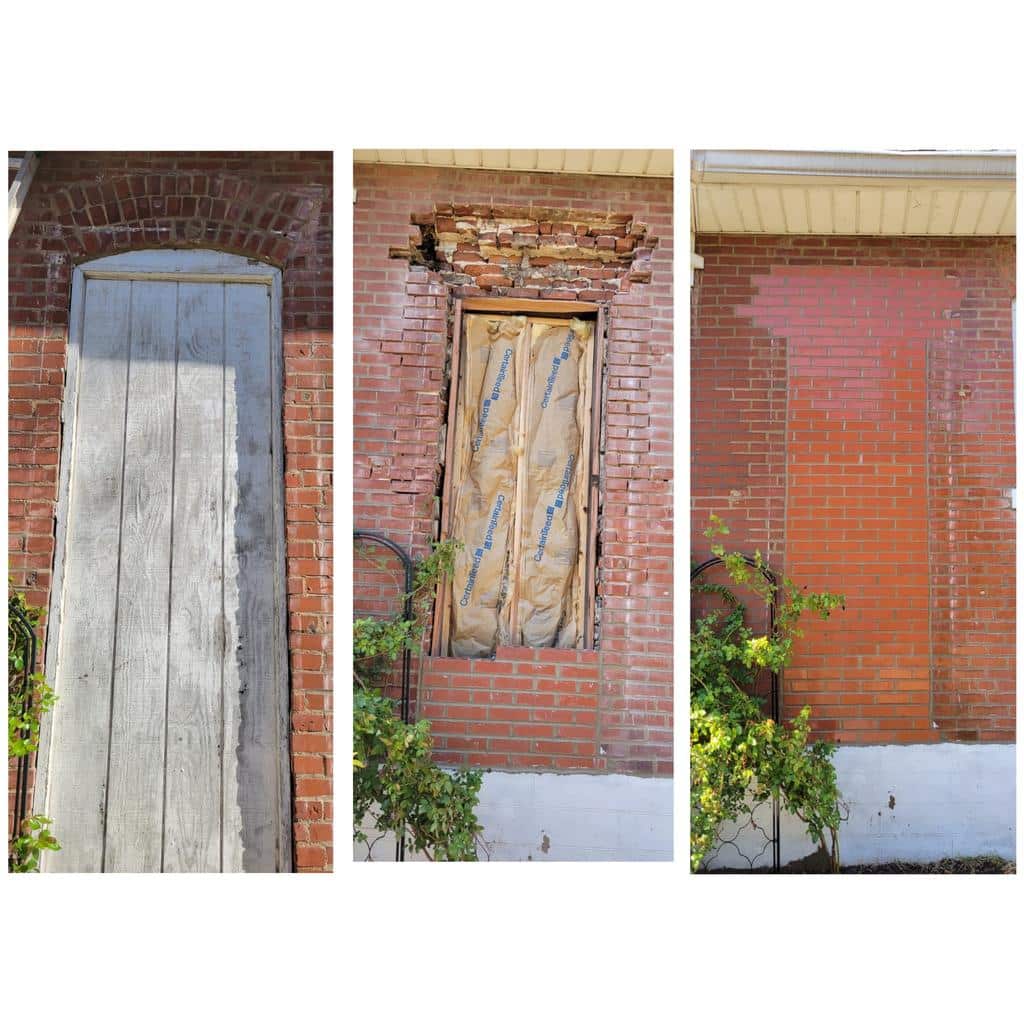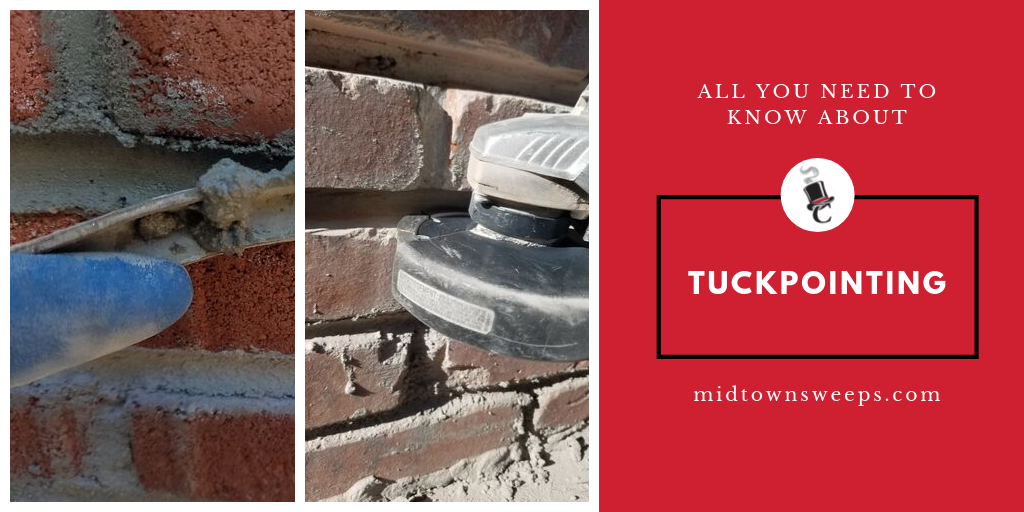Explore the Knowledge of Raul's Tuckpointing St. Louis MO Providers for Superior Stonework Solutions
Wiki Article
Improve the Appeal and Longevity of Your Brickwork With Tuckpointing
Over time, the mortar that holds those bricks together can deteriorate, leaving your framework vulnerable to harm and taking away from its visual appeal. Concern not, for there is a service that can bring back both the appeal and durability of your brickwork: tuckpointing. In this conversation, we will discover the essentials of tuckpointing, its advantages, the difference between tuckpointing and repointing, the process itself, and the vital methods for keeping and caring for tuckpointed brickwork.The Basics of Tuckpointing
Tuckpointing is a skilled method utilized to fix and enhance the appearance and architectural stability of brickwork. It entails the procedure of eliminating shabby mortar joints and replacing them with fresh mortar. The term "tuckpointing" describes the technique of making use of two various shades of mortar to develop the impression of fine joints, giving the brickwork a more refined and visually pleasing appearance.
The very first step in tuckpointing is to thoroughly evaluate the problem of the brickwork. This entails checking the mortar joints for signs of degeneration, such as fracturing, collapsing, or missing mortar. As soon as the issue areas have actually been determined, the old mortar is very carefully eliminated utilizing specialized tools, such as a grinder or carve, while making sure that the blocks themselves stay intact.
After the old mortar has been removed, the following step is to prepare the joints for fresh mortar. This commonly includes cleaning any type of debris or loose material and wetting the joints to make certain correct bond. A proficient tuckpointer makes use of a pointing trowel to carefully fill the joints with fresh mortar, making sure to produce a flush and consistent surface area.
Benefits of Tuckpointing
Improving both the long life and look of brickwork, tuckpointing deals a number of notable advantages for property owners and homeowner alike. One of the primary advantages of tuckpointing is its ability to extend the life-span of block frameworks. By replacing tatty mortar joints, tuckpointing avoids moisture from permeating into the brickwork, which can bring about architectural damages gradually. This aids to maintain the stability of the brickwork and extend its overall longevity.Over time, mortar joints can come to be broken, discolored, or stained, taking away from the overall look of the brickwork. Tuckpointing includes meticulously eliminating the damaged mortar and replacing it with fresh mortar of a contrasting color.
In addition to improving the durability and appearance of brickwork, tuckpointing can additionally boost the worth of a building. Well-maintained brickwork is viewed as a preferable feature by potential customers and can significantly boost the curb charm of a residential property. When the time comes to place the residential or commercial property on the market., this can lead to a greater selling rate and a quicker sale.
Tuckpointing Vs. Repointing: What's the Difference?

To compare tuckpointing and repointing, it is vital to recognize the crucial differences between these 2 methods of brickwork remediation. While both methods aim to maintain the architectural stability and visual charm of brickwork, they vary in their approach and implementation.
Tuckpointing is a meticulous procedure that entails applying 2 different shades of mortar to develop the impression of great joints. This method is primarily used to boost the visual appeal More Bonuses of brickwork by creating the look of well-kept and well-crafted joints. The tinted mortar is thoroughly used and formed to match the shade and account of the original mortar, offering the impression of precision and craftsmanship.
On the various other hand, repointing is a much more straightforward process that involves getting rid of broken or tatty mortar from the joints and changing it with fresh mortar. The primary objective of repointing is to restore the architectural stability of the brickwork by ensuring appropriate bonding and securing between the blocks. Unlike tuckpointing, repointing does not entail using tinted mortar or the production of an attractive effect.
The Refine of Tuckpointing
The application of 2 different shades of mortar to create the illusion of great joints is a meticulous procedure recognized as tuckpointing. This strategy entails eliminating deteriorated mortar joints and replacing them with new mortar to boost the appearance and structural stability of the brickwork. The procedure of tuckpointing can be divided into numerous actions.First, the old mortar is carefully removed making use of specialized tools such as mills and blades. It is essential to eliminate the mortar to an adequate deepness to guarantee a solid bond with the brand-new mortar.
Next, the joints are completely cleansed to remove any kind of debris or dirt. This aids to develop a tidy surface for the new mortar to abide by.
As soon as the joints are cleansed, a slim layer of new mortar is related to the joint utilizing a little pointing trowel. This first layer, referred to as the "pointing up" mortar, is generally the exact same shade as the existing mortar.
After the initial layer has actually been used, a second layer of mortar is used on top of it. This second layer, called the "fillet" mortar, is a different color and is meticulously formed to develop the impression of a great joint.

Keeping and Caring for Tuckpointed Brickwork
When the tuckpointing process is completed, proper upkeep and care are important to protect the enhanced appeal and durability of the brickwork. This maintenance not only ensures that the tuckpointed locations remain functional and undamaged but likewise helps to stop any prospective damages to the total structure.One of the crucial elements of maintaining tuckpointed brickwork is normal cleaning. It is vital to prevent using any type of severe chemicals or unpleasant devices that could potentially harm the mortar or the bricks themselves.
navigate to these guys In addition to get more cleansing, it is necessary to examine the tuckpointed locations regularly. This enables the very early discovery of any type of signs of degeneration or damages. Any type of splits, loose mortar, or signs of water damages should be resolved immediately to avoid more wear and tear.
Furthermore, ensuring appropriate drain around the brickwork is important. Water merging or incorrect drainage can cause moisture infiltration, which can damage the mortar and cause architectural damage. Clearing up gutters and downspouts on a regular basis and making certain that they are correctly guided far from the brickwork can help prevent these problems.
Last but not least, it is suggested to seek advice from with an expert tuckpointing service provider for routine repair and maintenance. Their competence and experience can guarantee that any type of necessary fixings are done properly, maintaining the stability and long life of the tuckpointed brickwork.
Final Thought
To conclude, tuckpointing is an useful strategy for improving the appeal and toughness of brickwork. It supplies numerous advantages, such as boosting the structural honesty of the masonry and preventing dampness penetration. Tuckpointing includes the elimination and substitute of shabby mortar, leading to a consistent and tidy appearance. By correctly caring and preserving for tuckpointed brickwork, property owners can guarantee its longevity and remain to appreciate its aesthetic charm.
It involves the process of eliminating deteriorated mortar joints and replacing them with fresh mortar. Raul's Tuckpointing St. Louis MO.After the old mortar has been removed, the following action is to prepare the joints for fresh mortar. Tuckpointing involves very carefully removing the damaged mortar and replacing it with fresh mortar of a contrasting shade. The tinted mortar is carefully used and formed to match the color and account of the initial mortar, offering the perception of accuracy and workmanship

Report this wiki page